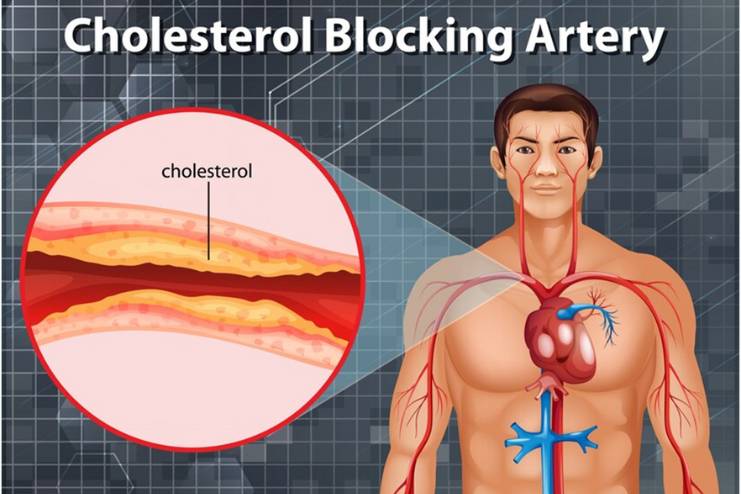Affiliate Disclaimer
Some links in this article are affiliate links. We may earn a small commission if you make a purchase through these links, at no extra cost to you. We only recommend products we find useful to our readersType 2 diabetes, or T2D, is a metabolic disorder where your body fails to process sugar effectively. Sugar, or glucose, is a fuel your body needs to charge itself. Unlike diabetes type 1 (T1D), primarily known for causing the immune system to destroy insulin-producing cells, T2D is mainly through insulin resistance and, over time, diminished insulin production.
Prevention and early intervention of type 2 diabetes require an understanding of the risk factors for the condition; many of these factors are amenable to modification through lifestyle interventions.
In this article, we will discuss the top 10 risk factors for type 2 diabetes.
1. Genetics and Family History

Family history is a crucial risk factor for type 2 diabetes (R). If one of your relatives, such as your parent or sibling, has T2D, your risk significantly increases. Some genetic variants can predispose one to reduced sensitivity to insulin and glucose metabolism dysfunction. Read in detail how genetics impact diabetes.
Genetics predisposes a person to T2D, but the inheritance pattern can be complex because multiple genes are involved, possibly with some interaction between these genes and environmental factors that increase or decrease the risk. You may read it in detail here.
2. Age
The risk of developing type 2 diabetes increases drastically with age (R) and peaks at or after 45 years of age. This increased risk may be partially related to the natural decline in sensitivity to insulin and pancreatic function that occurs with aging.
As people age, numerous risk factors begin to build up, including increased body weight, low physical activity, and poor diet. These multifactorial effects increase the likelihood of developing T2D.
3. Excess Weight and Obesity

Extra weight and obesity (R) are primary risk factors for type 2 diabetes. Being overweight, especially obese, raises the chance of potential insulin resistance and subsequently increases blood sugar levels.
Apart from body fat quantity, its distribution also has a crucial role. Visceral fat accumulated around the abdomen is thought to increase insulin resistance more than subcutaneous fat. Those with higher measures of waist circumference are especially at risk.
Body mass index assesses weight status. A BMI of more than 25 increases the risk of developing T2D. A BMI of 30 or above leads to obesity, increasing the risk further.
4. Lack of Exercise
Lack of physical activity (R) is another crucial risk factor for type 2 diabetes. Exercise reduces insulin insensitivity by helping the body to increase glucose uptake. Sedentary lifestyles contribute to insulin resistance.
Participate in at least 150 minutes of moderate-intensity aerobic activity every week, like brisk walking or cycling combined with muscle-strengthening activity, for two or more days a week.
5. Poor Diet

Poor diet (R) is a common risk factor in the development of type 2 diabetes. A diet rich in processed foods, refined sugars, and unhealthy fats contributes to weight gain, insulin insensitivity, and other metabolic disturbances.
Sugary drinks, including soda and sweetened teas, are associated with T2D. These foods are loaded with calories without any nutritional value, thus causing one to become overweight and elevate blood sugar levels.
6. Insulin Resistance
When you’re insulin resistant, your cells become resistant to insulin – the hormone that maintains normal blood sugar levels. This triggers the pancreas to produce more insulin to compensate, leading to an increase in blood sugar and thereby causing type 2 diabetes.
Sometimes, insulin resistance (R) can develop before Type 2 Diabetes occurs and, in most cases, doesn’t present any noticeable symptoms for many years. This is why monitoring blood glucose and insulin levels, especially among vulnerable populations, remains essential.
A high degree of body fat, especially around the abdomen, physical inactivity, and a diet loaded with fats and cholesterol contribute to insulin resistance. Genetic and hormonal factors could also lead to insulin resistance.
Some people suffering from insulin resistance may not experience its symptoms; however, others will. Some of the symptoms include tiredness, hunger, and poor concentration. Other symptoms include dark patches of skin that are normally referred to as acanthosis nigricans.
Read more about the science of insulin sensitivity and glucose absorption.
7. High Blood Pressure
High blood pressure (R), also known as hypertension, is closely associated with an increased risk for type 2 diabetes. Risk factors of one often increase the risk of the other.
High blood pressure can damage the blood vessels and impair the body’s proper use of insulin. The metabolic stress induced by high blood pressure may also contribute to the induction of insulin resistance, a hallmark precursor of T2D.
8. Abnormal Cholesterol and Triglycerides

Impaired lipid profiles are associated with obesity and metabolic syndrome, which are important risk factors for T2D. Abnormal cholesterol and triglyceride levels significantly increase the risk of developing type 2 diabetes (R).
Low levels of high-density lipoprotein (HDL) cholesterol, elevated triglyceride, and elevated low-density lipoprotein (LDL) cholesterol are associated with insulin resistance and cardiovascular disease.
For example, increased triglyceride levels will further amplify fatty deposition in the liver and muscle tissues, causing insulin resistance.
9. Gestational Diabetes
Gestational diabetes (R) occurs when your body cannot make enough insulin during your pregnancy, so your blood sugar levels become too high. It significantly raises the long-term risk for women who have gestational diabetes.
Research indicates that women who have experienced gestational diabetes run at a risk of between 50% and 70% of acquiring type 2 diabetes after 5 to 10 years following delivery. This increased risk further cements the need to continue monitoring and managing blood sugar postpartum.
Several factors may predispose one to gestational diabetes, but these include obesity, advanced maternal age, a family history of diabetes, and certain ethnic backgrounds. These risk factors can help identify the condition early and manage effectively during pregnancy.
10. Ethnicity
Certain racial and ethnic groups (R) are more susceptible to type 2 diabetes. These include African Americans, Hispanic Americans, Native Americans, and some Asian Americans, who are more likely to develop T2D than Caucasians.
This may be a function of the interplay of genetic predispositions, cultural dietary habits, and socio-economic factors that influence lifestyle choices that increase the risk of obesity, insulin resistance, and metabolic health in general. You may read more on this here.
Conclusion
In this article, we have reviewed the top 10 risk factors for type 2 diabetes and actionable steps that can influence diabetes risk management and prevention.
Factors such as age, race, and genetic predisposition are out of our control. However, we can control and manage lifestyle factors like diet, exercise, and weight management, which significantly lower the risk of developing diabetes.
To reduce your risk of diabetes and enhance your overall quality of life, make routine checkups a priority, learn about your family’s medical history, and commit to healthy habits.
In this Article




















